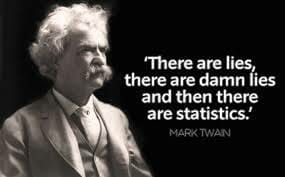A guest post by Amy Hufford of MembershipWorks
In a time where people spend more time isolated in front of a screen than interacting with other humans, isn’t the idea of membership a more interesting and compelling proposition?
Just about every type of nonprofit can have members. Think about public radio and television stations. You might consider their contributors to be donors, but calling them members adds meaning.
Memberships add value for donors
Some public television and radio stations have made donors feel more like members by holding events.
- KLRU, Austin’s public television station, has created premium member events such as Downton Abbey watch parties.
- They also offer member only access to PBS’s Passport product, which is essentially Netflix for public television programming.
- NPR affiliate KUT has created a leadership circle sustaining membership that offers members special event invitations, tours and the opportunity to meet famous personalities.
But even if a nonprofit does not host in-person gatherings of members, the suggestion of community is psychologically attractive. It’s a benefit to the member!
What’s in it for you: increased revenue, stable budget
There are real financial reasons for your nonprofit to have members. Membership is understood to be something that is renewed on a regular basis, implying more of an ongoing relationship than a donation suggests.
Consider a donor inspired by your mission who wants to donate $50. But what if you presented an ongoing option, such as a $10 per month sustaining membership that is promoted as “the cost of one lunch each month.” That offer will collect $120 over the course of a year (and even more, if the member doesn’t disable their monthly auto-recurring credit card payments the next year).
This is also a win for budgeting, as these types of memberships can help the organization better predict monthly fundraising income.
How to move toward memberships
- Be sure your donation platform offers membership management software.
Why do you need specific software to handle memberships? You’ll need the ability to:-
- Automatically bill members on an recurring basis
- Classify members in different ways to keep track of their involvement
- Set up multiple past due notices and failed payment reminders in your member CRM, to account for today’s distracted members. (The notices should mention the things that the members will miss out on if they don’t renew!)
-
- Check to be sure your payment gateway is set up to accept auto-recurring payments.
For example, PayPal Pro requires an add on to handle automated member billing. Stripe handles recurring payments by default. - Create membership levels or add-ons.
You may be surprised by the number of people who pick a higher level, given the chance! Consider how you are going to create value for each level of membership. The benefits package should justify the increased cost of higher priced memberships.
- Promote your new membership levels
To help them feel special, your current donors and volunteers should be offered the opportunity to join as a member before you promote membership to others.-
- You can even offer a discount code to encourage them to join.
- Spread the word about memberships on your website, enewsletter and social media.
- Consider holding an event to either kickoff your membership drive or to reward those who join by a certain date.
-
The magic of membership
 Here’s a success story that might encourage you to invite donors to become members.
Here’s a success story that might encourage you to invite donors to become members.
One neighborhood association had a PayPal button for dues payments on their website, but no one was automatically reminded to renew. The association was running out of money. After they set up membership software with automatic recurring credit card payments, the association quickly doubled its renewal rate.
The board of directors were also shocked to see that many members opted to make significant additional recurring donations beyond their dues payment. These donations made it possible for the group to prevent commercial development from negatively impacting the neighborhood. Making the shift from single donations to membership payments with add-ons possibly saved the association from extinction.
More ways to create value for members
We’ve already talked about member events, but some donors may not enjoy the crowds. They may want another way to feel like they belong. Here are six ways you can give them that happy feeling.
- Member only content – Your membership plugin can help you restrict content to pages that only members have access to. For instance: create a list of businesses that offer discounts to your members–and only members get to see the list.
- Member directory – Offer your business members the chance to be listed in a member directory that is promoted to non-business members or available to the public on your website.
- Member event discounts – Tying your events calendar to your membership database through your membership software will allow you to offer special ticket prices just for members.
- Early event registration – Many event registration systems will allow you to have a private event page that isn’t listed on your main calendar until you activate it. Use this private link within an email message to your members. Tell them that registration is only open to them until a certain date when it becomes available to the general public.
- Member only emails or data – MLS systems and Realtor associations often send out or make available valuable statistics about market trends to their members. Consider if you have data that would be attractive for your members to receive regularly. If you don’t have stats to share, consider conducting a survey of members or those you serve, so that you do have information to share. Or perhaps there is a thought leader in your space who would be willing to write a guest blog post or newsletter column that is only available for your members?
- Member only listserves or social media groups – Popular platforms for groups include LinkedIn and Facebook. Trade associations have used listserves to share information between members about job openings and best practices. But first consider:
- What type of information will be meaningful to share among members in this group? Will it support your mission or feel like a stretch in terms of relating to your nonprofit’s goals?
- Are you on a solid footing with your members and donors before starting a group? (It could unintentionally become a platform for members to complain about you.)
- How much staff time will be spent moderating such a group?
Do you have other ideas about creating value for your members or reasons to offer memberships? Let us know in the comments.
Amy Hufford is a Technologist at MembershipWorks. She has worked in membership technology for more than 20 years and has experience building membership websites with a variety of membership software platforms.


